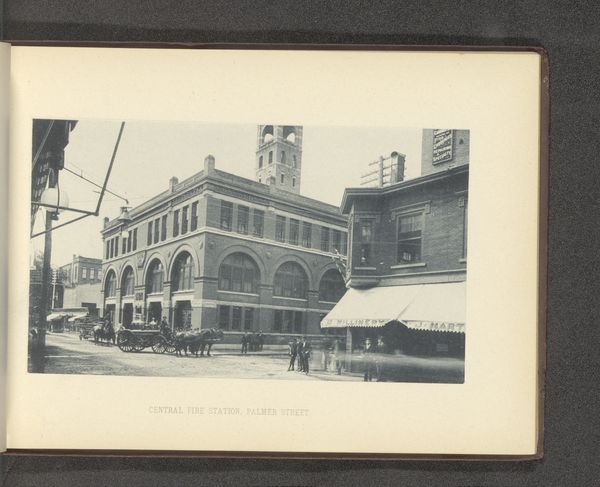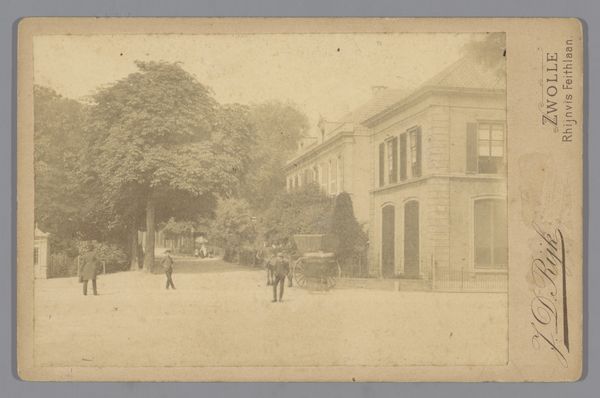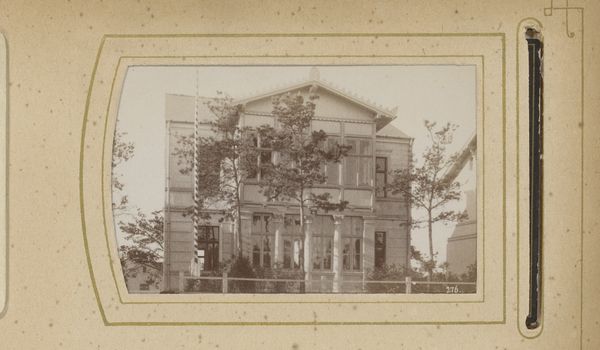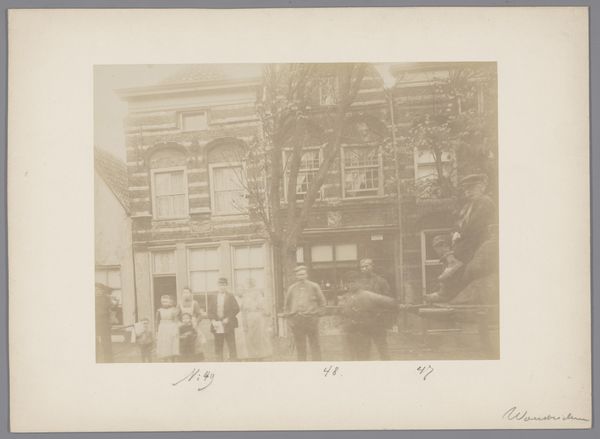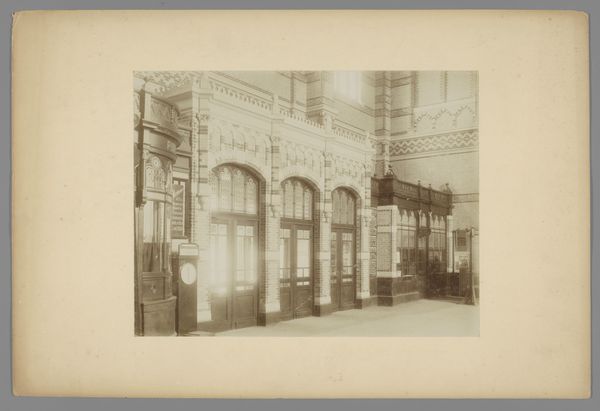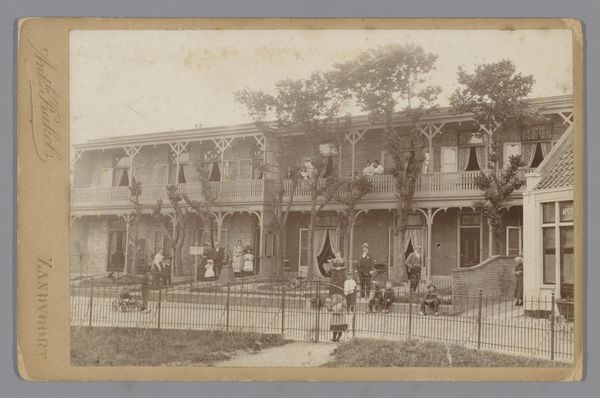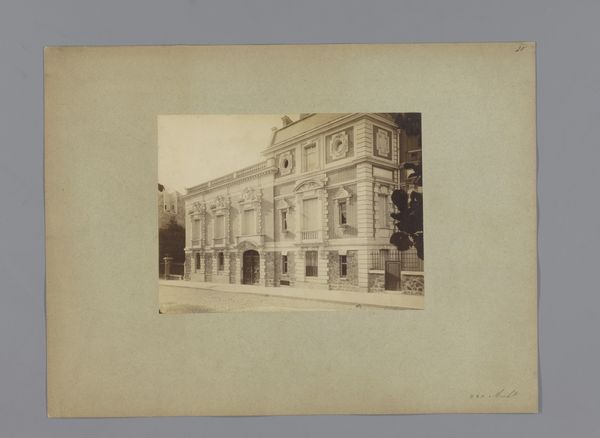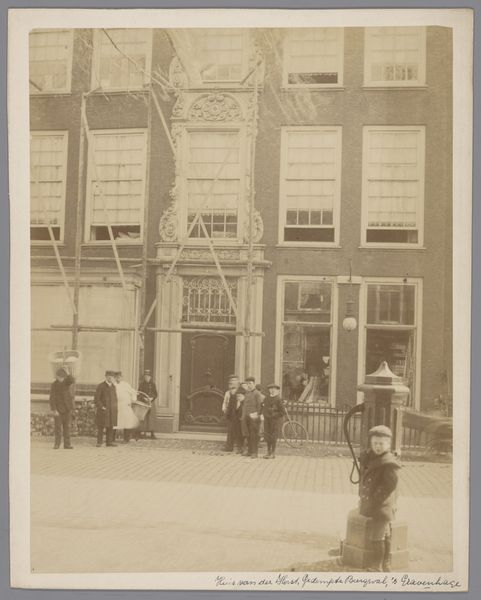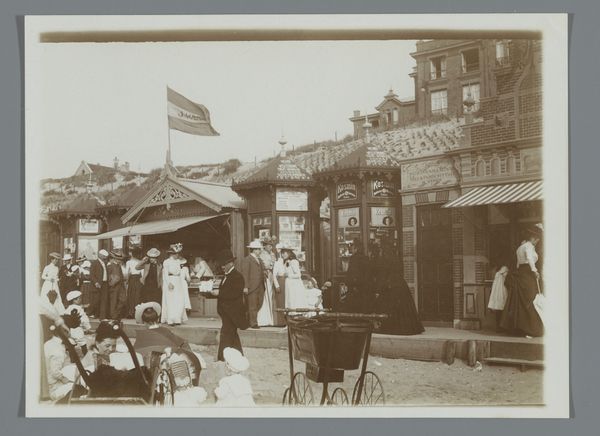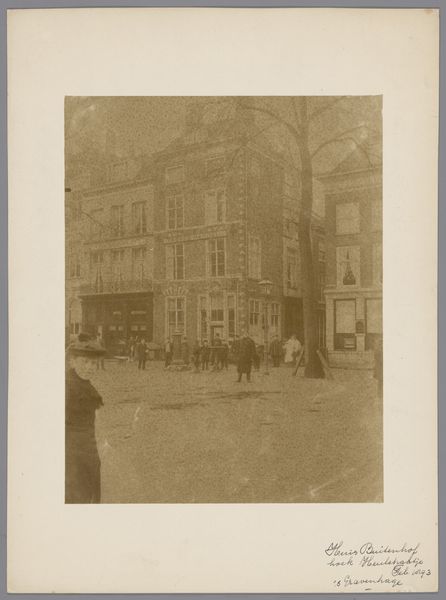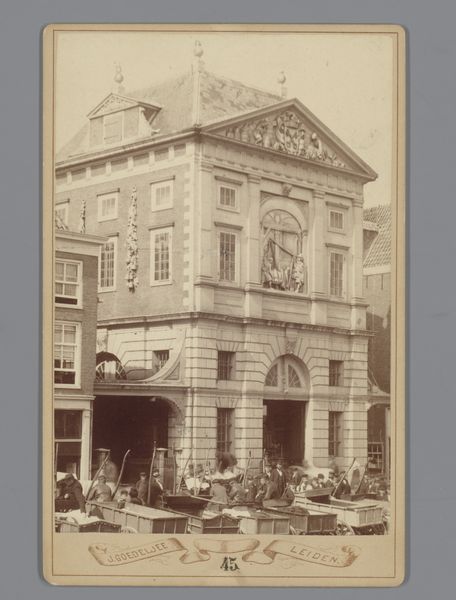
Groepsportret van (vermoedelijk) medewerkers op het bordes van het Stedelijk Badhuis (Grand Hôtel des Bains) te Scheveningen before 1884
0:00
0:00
print, photography
#
portrait
# print
#
photography
#
group-portraits
#
genre-painting
#
realism
#
building
Dimensions: height 101 mm, width 147 mm
Copyright: Rijks Museum: Open Domain
Curator: This captivating photographic print is a group portrait, likely of staff, situated on the steps of the Grand Hôtel des Bains in Scheveningen. We believe it was captured before 1884 by Carl Philip Wollrabe. Editor: It strikes me as a very ordered chaos. All these people, a staged yet candid shot... it conveys a fascinating glimpse into labour relations of that time, the staff assembled so precisely yet retaining individual characteristics. And is that a dog down there on the lower left side of the staircase? Curator: Exactly! The image showcases the hotel, its architecture as a backdrop that certainly conveys prestige. The people posed in front provide scale and life. I wonder what conditions facilitated it’s production and how photography itself began shaping collective memory? What about the socioeconomic aspects and class dynamics in the late 19th century when the bourgeoisie started spending vacation time at seaside destinations, for example. Editor: Absolutely. Think about the materiality too, the albumen print lending this sepia tonality, each stage revealing choices and limitations the photographer dealt with. Wollrabe’s choice of composition says much. They weren't simply capturing an image; they were crafting a social document of their time using photography as new craft. The availability and cost of these prints no doubt restricted how far the image disseminated. How did its relative rarity influence interpretation? Curator: Good question. Also worth considering is where this print was originally kept, who would have seen it, what narratives circulated around it. I am also interested in what this work of Realism tells us about how public life and leisure time at the time were changing. The ‘genre painting’ quality in a photograph captures what it meant to see yourself in the image-making apparatus. Editor: Precisely! Wollrabe did not simply document. There's clear artistry embedded in presenting labour in a social tableau for display and sale. Looking at that large building, with its architectural formality set against what seem everyday staff, I also notice this speaks of who had power – architectural or material in that building itself – versus that labor, captured for only some privileged buyers. Curator: Yes. Looking at it more now, it allows us an invaluable lens through which we can consider both material realities and representational strategies of this moment in social history. Editor: For me it highlights how understanding its means of creation shapes how and why we understand art through processes – here photography as industry.
Comments
No comments
Be the first to comment and join the conversation on the ultimate creative platform.
